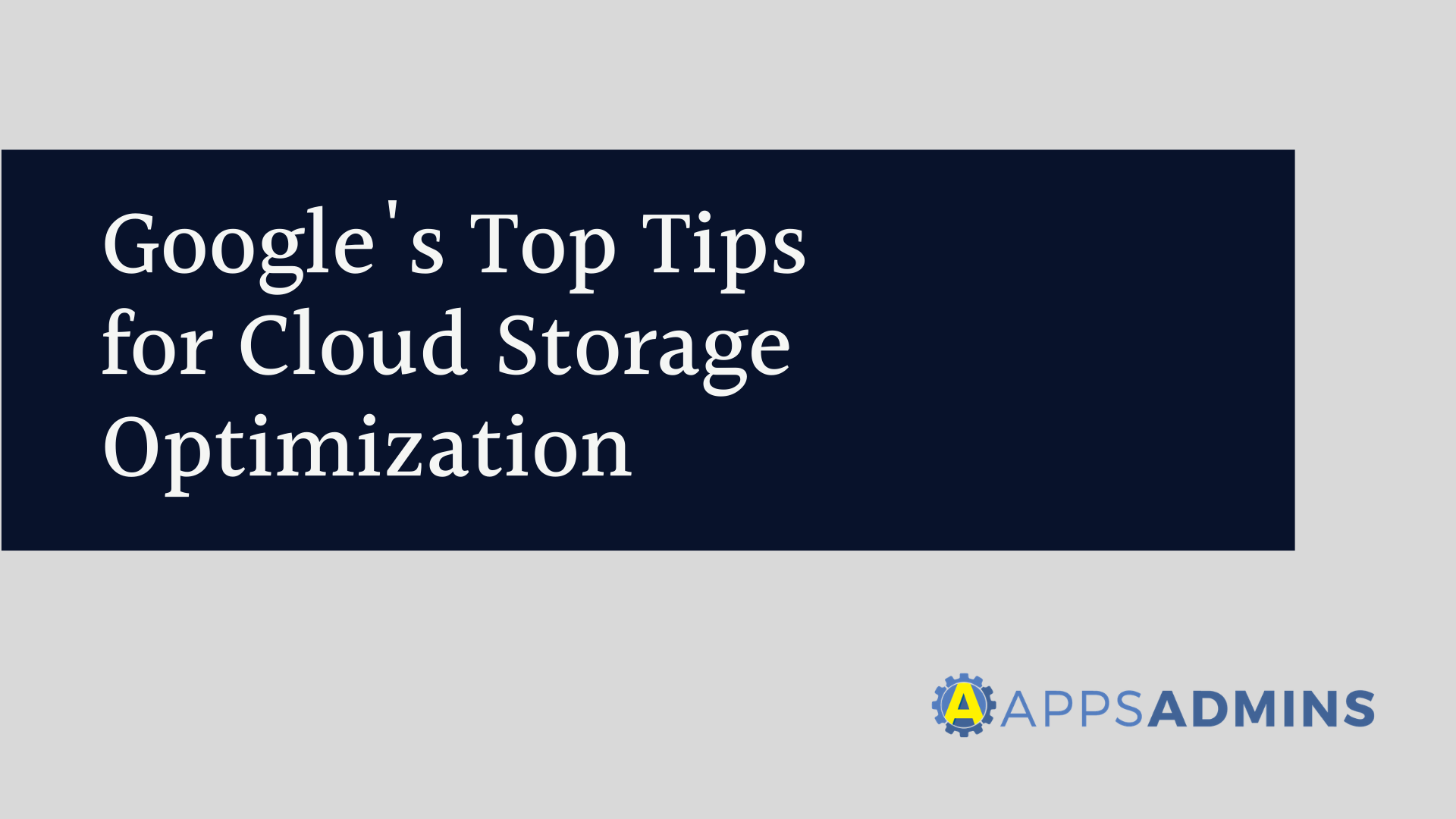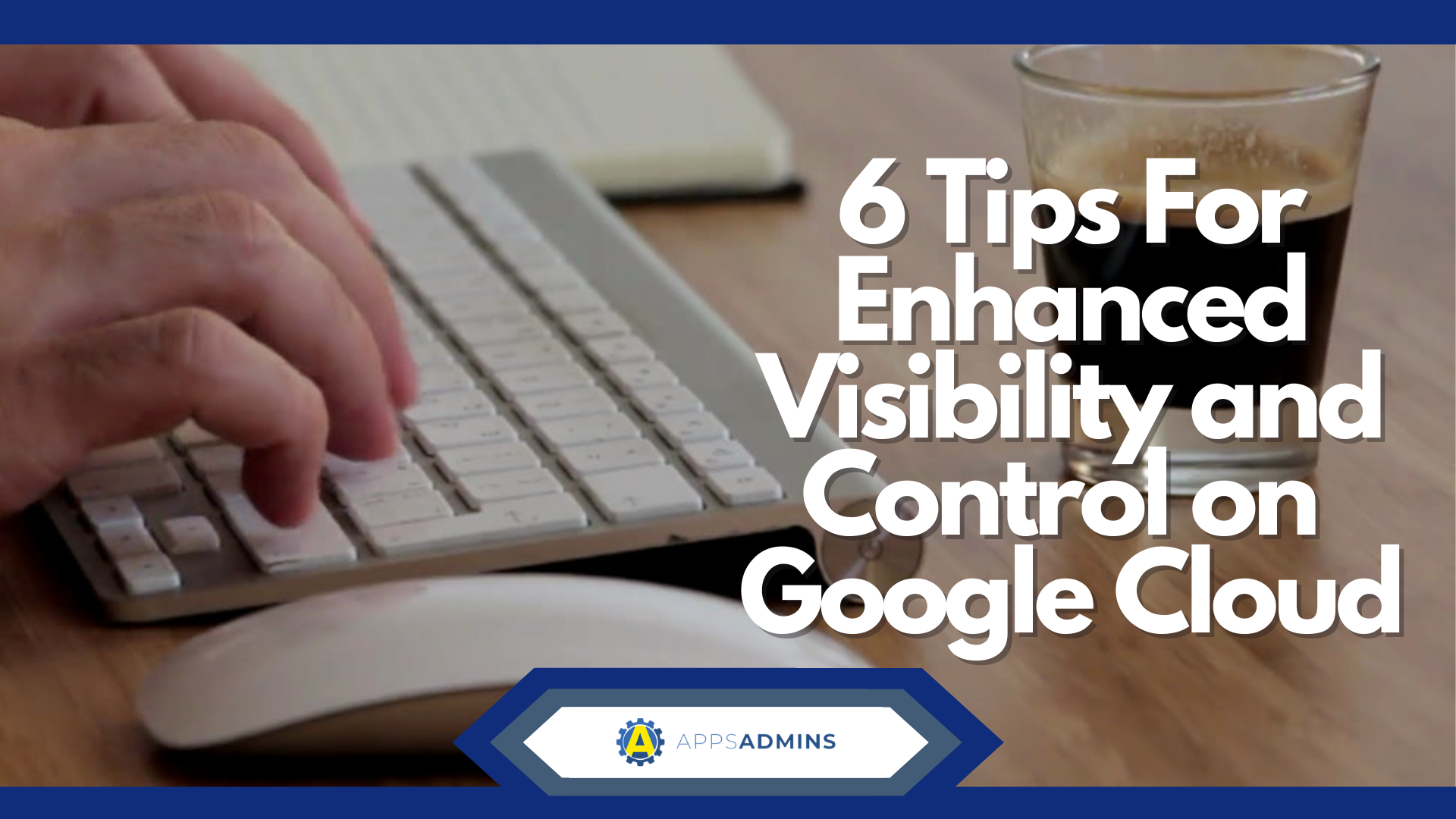G Suite Business Free for 30 Days
Sign up for a Free 30 Day Trial of G Suite Business and get Free Admin support from Google Certified Deployment Specialists.


Cloud storage seems simple enough at first. You just dump all of your must-have information into a cloud database and hope you don't run out of bandwidth any time soon. Tools like Cloud Storage, Google's solution for unified object storage, is excellent for this kind of flexible general storage. However, if you're not putting enough time and effort into figuring out how to optimize your storage environment, then you could be missing out on cost-savings and efficiency.
As Google noted in its recent blog, storing items and data on the cloud might be easy enough, but making sure that you're getting the most from your storage is something else entirely. Fortunately, there are some easy ways to refresh and enhance your cloud storage strategy through the Google Cloud Platform.
Here are the basic tips (as recommended by Google) that might help.
Know the Purpose of What you Store
One of the most important steps you can take when it comes to improving cloud storage is making sure that you're not holding onto information for no reason. Everything you put into the cloud should be there for a reason. For instance, maybe you are storing data for compliance purposes, or to help you get better insights into your business operations.
When you start migrating data into the cloud, or you're cleaning out your database, ask yourself whether every piece of data you are holding onto has value to offer. If not, then it might be time to start removing some of the files and folders in your system that you no longer need.
A regular audit of your cloud storage solutions will stop you from cluttering up your database with content that's not bringing value to you or your business. Ask yourself:
- Why is this object valuable?
- How long will it be valuable for?
- When should I reassess this item's lifecycle?
Once you're finished assessing your database, share your lifecycle policy with your entire team so they know how they should be storing and managing your cloud data too.
Understand your Access Patterns
Another suggestion that Google offers for improving your data maintenance strategies is to know when to transform objects in cloud storage into low-cost storage classes. According to Google, while this is a valuable strategy, it's something that today's businesses need to use carefully. Although long-term storage is easier to maintain if you only have to access objects every now and again, you'll have additional charges to manage if you start needing to access the data more frequently.
When auditing and organizing the data that you want to store on the cloud, ask yourself how frequently you're going to need to access that information in the long-term. For instance, you don't need to worry too much about high charges if you need to obtain a file every three or four months. However, if you're searching for data every other day from a specific report, it's better to keep that in your short-term storage locations.
Consider Where You'll be Accessing Data From
Finally, Google notes that it's a good idea to think about where you're going to be accessing your critical data from. For instance, an employee time-tracking application would probably fit well in a multi-regional cloud environment. This will ensure that you can store your object in multiple locations and access it whenever necessary. When it comes to accessing items regularly in the cloud, a multi-regional location helps you to increase availability significantly.
However, while storage in multi-regional locations is great for improving performance and accessing higher availability levels, it often comes at a premium. Companies don't necessarily need to store everything in the same multi-regional environment, particularly if doing so would lead to an increase in egress charges.
During the application design phase, think about where your data needs to be, and who is going to access it. One option could be to use buckets in regional locations. This is a good choice if the region you're considering is close to your end-users.
While cloud storage and keeping your crucial items in the cloud might seem very simple on the surface, it's not something you should rush into without a plan. In today's cloud-driven world, the right cloud storage solution will significantly increase your chances of keeping costs low and availability high through the Google Cloud Platform.
Ready to get started? Our Cloud Solutions Specialists at Apps Admins are ready to serve your company's work from home needs.
.jpg?width=818&name=appsadmins-svg-rules-1%20(2).jpg)








